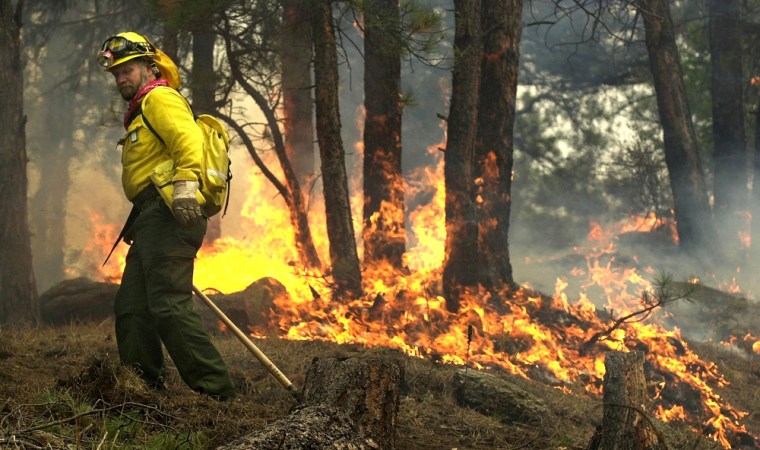Western wildfires have increased “suddenly and dramatically” since the late 1980s and the wildfire season grew longer — a pattern that appears tied to global warming, according to a study published Thursday.
“The increase in large wildfires appears to be another part of a chain of reactions to climate warming,” said Dan Cayan, a co-author of the paper and director of the climate research division at Scripps Institution of Oceanography.
The authors said that while part of the increase may be attributed to natural fluctuations, evidence also links it to the effects of human-induced climate warming.
Scientists have become increasingly concerned in recent years about the amount of carbon dioxide released into the atmosphere by the burning of fossil fuels. Average worldwide temperatures have risen this century as a result of what many believe is a greenhouse effect from those emissions.
The researchers used the files of the U.S. Forest Service and National Park Service to analyze 1,166 fires of more than about 1,000 acres from 1970 to 2003. Their findings were published Thursday in the online edition of the journal Science.
More fires, longer seasons
Beginning about 1987, there was a change from infrequent fires averaging about one week in duration to more frequent ones that often burned five weeks or more, they reported.
“Wildfire frequency was nearly four times the average of 1970-1986, and total area burned by these fires was more than six and a half times its previous level,” they wrote.
On top of that, the length of the wildfire season was extended by 78 days.
The researchers said the changes appear to be linked to annual spring and summer temperatures, with many more wildfires burning in hotter years than in cooler years.
“At higher elevations what really drives the fire season is the temperature,” said Anthony Westerling, another co-author and Scripps researcher.
They also found a connection between early arrivals of the spring snowmelt in the mountainous regions and the incidence of large forest fires. An earlier snowmelt, they said, can lead to an earlier and longer dry season, which provides greater opportunities for large fires.
“When you have a warm spring and early summer, you get rapid snowmelt,” Westerling said. “With the snowmelt coming out a month earlier, areas get drier overall. There is a longer season in which a fire can be started and more opportunity for ignition.”
Research team member Thomas Swetnam, director of the Laboratory of Tree-Ring Research at the University of Arizona in Tucson, said that “I see this as one of the first big indicators of climate change impacts in the continental United States.”
“We’re showing warming and earlier springs tying in with large forest fire frequencies,” he added. “Lots of people think climate change and the ecological responses are 50 to 100 years away. But it’s not 50 to 100 years away — it’s happening now in forest ecosystems through fire.”
Swetnam said he did not at first believe climate change affected forest fires. But he changed his mind as he and his colleagues studied the data. “The length of the fire season has increased almost two-and-one-half months compared with 1970 to 1986,” he said.
Expectations for more fires, CO2
The researchers emphasized that they did not try to determine how much of the climate impact was natural and how much from greenhouse gas emissions tied to global warming.
These results have important regional and global implications,” they wrote. “Whether the changes observed ... are the result of greenhouse-gas induced global warming, or only an unusual natural fluctuation, is presently unclear.
“Regardless of past trends, they added, “virtually all climate model projections indicate that warmer springs and summers will occur over the region in coming decades. These trends will reinforce the tendency toward early spring snowmelt and longer fire seasons. This will accentuate conditions favorable to the occurrence of large wildfires, amplifying the vulnerability the region has experienced since the mid-1980s.”
The scientists also expressed concern that the fires mean forests were releasing more carbon dioxide, a key greenhouse gas, than they are absorbing.
“If wildfire trends continue,” they wrote, “at least initially this biomass burning will result in carbon release, suggesting that the forests of the western U.S. may become a source of increased atmospheric carbon dioxide rather than a sink, even under a relatively modest temperature increase scenario.”
The research was supported by the National Oceanic and Atmospheric Administration, the Forest Service and the California Energy Commission.
